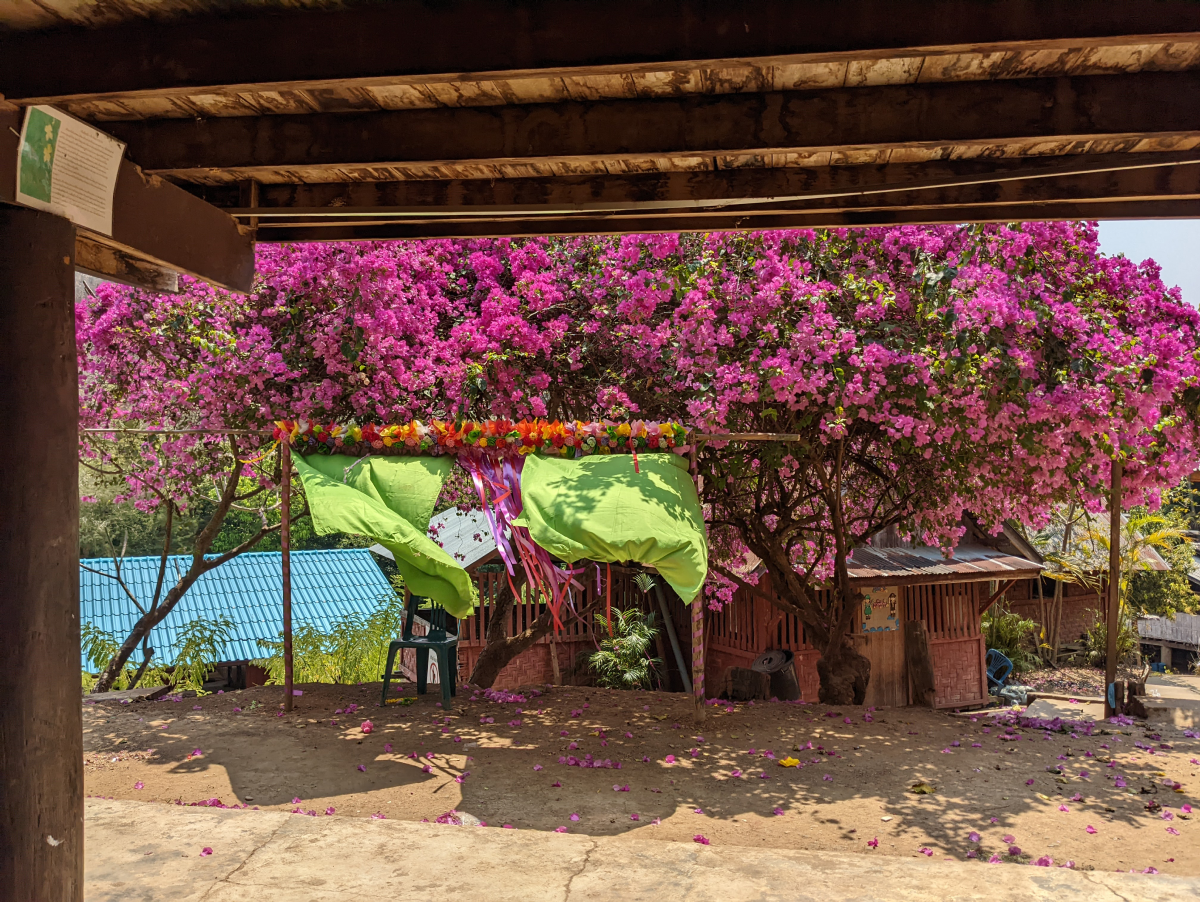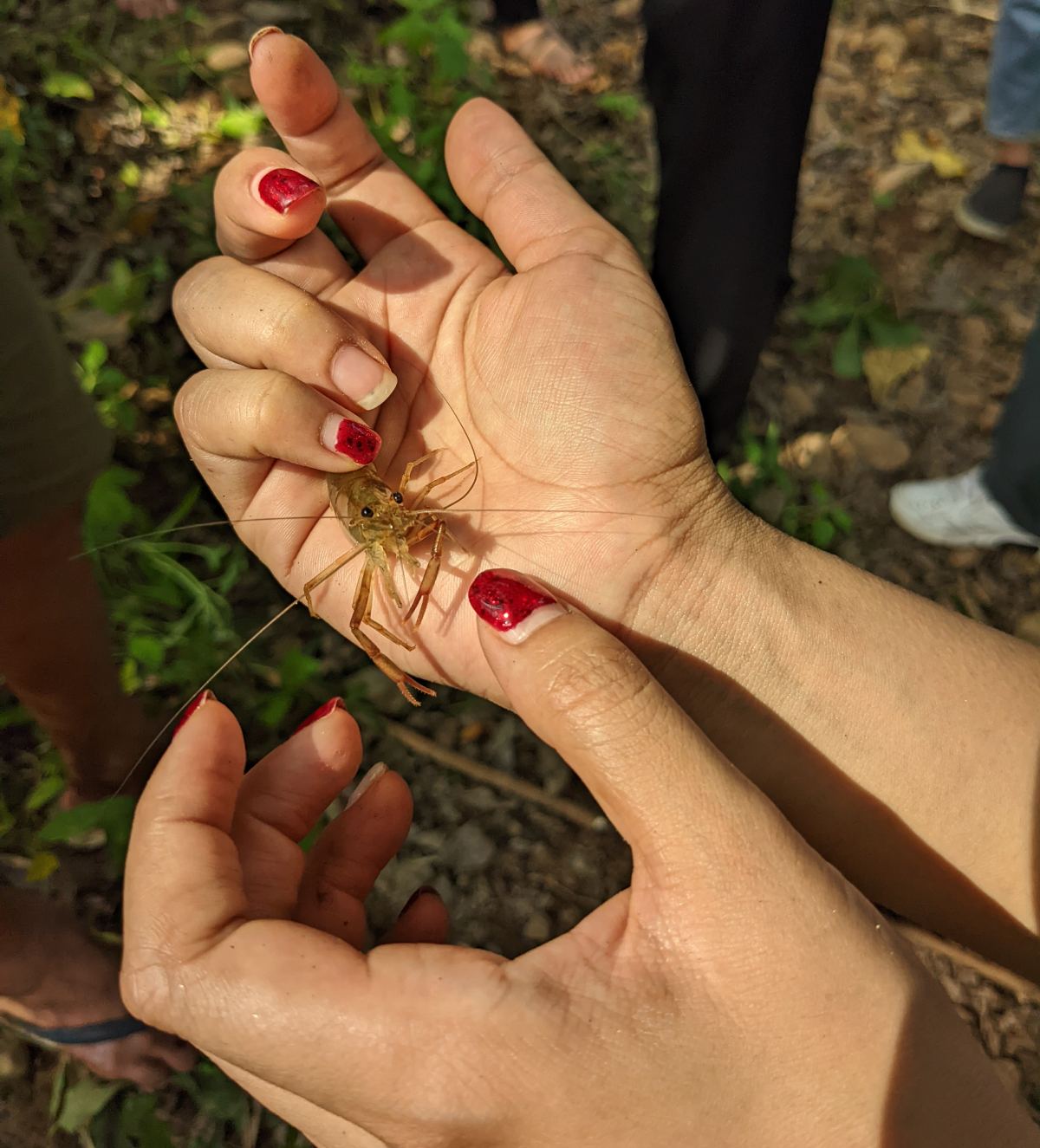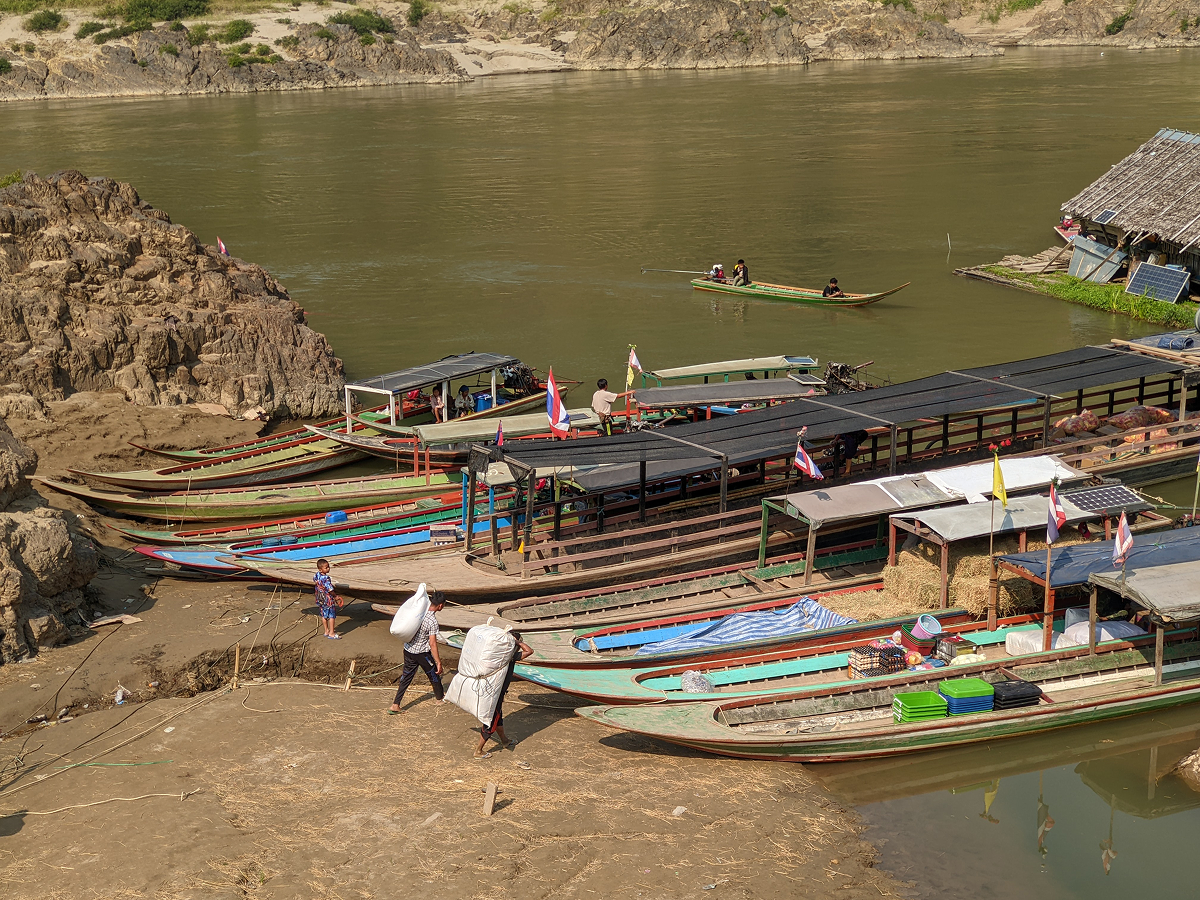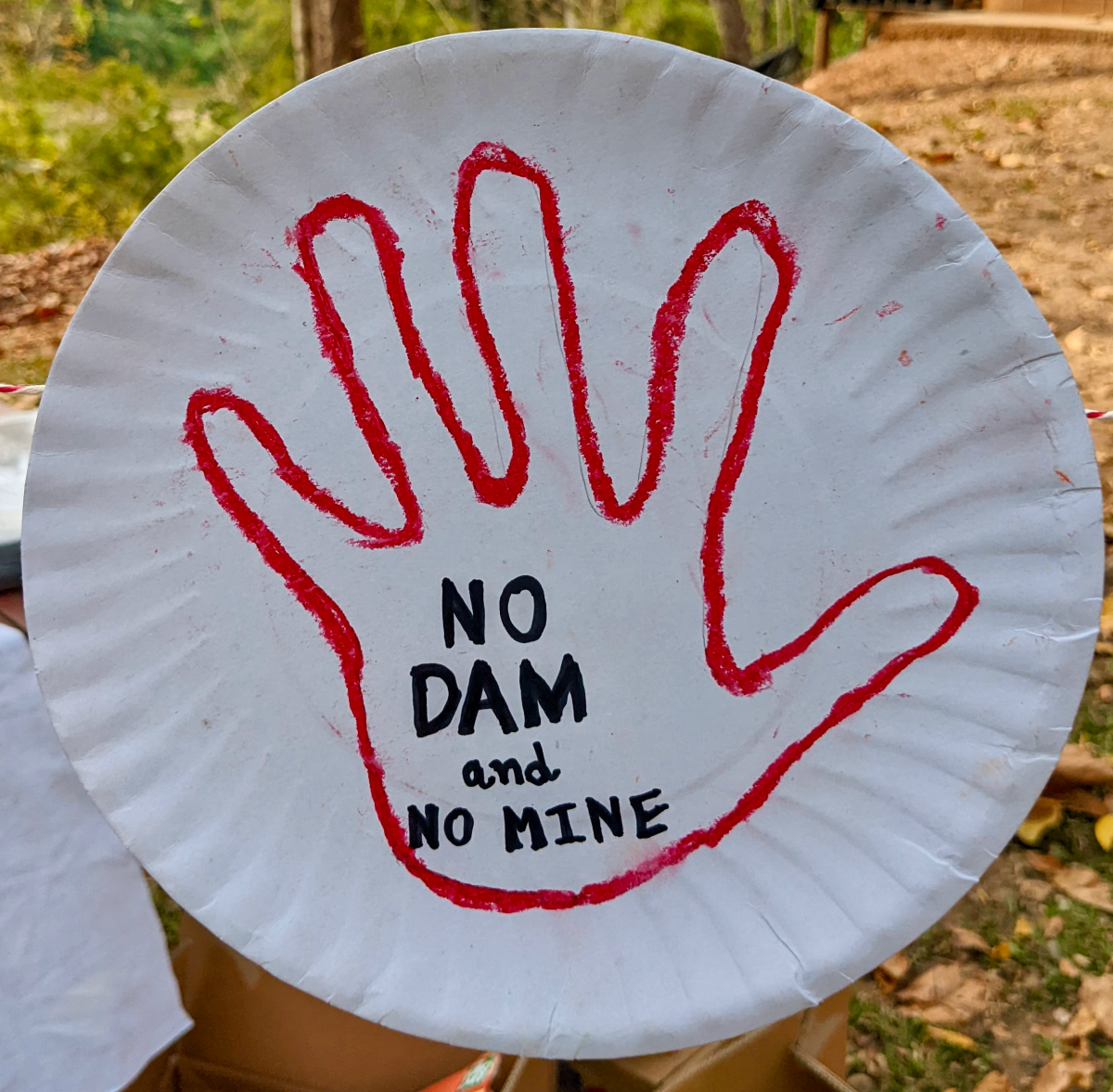Along the Salween River-border between Thailand and Myanmar, state-led infrastructures such as long-proposed hydropower dams and water diversions threaten to displace Indigenous Karen residents from land and livelihoods, including their capacity to cultivate and provide food. A key aspect of contesting these infrastructures in the making includes work undertaken primarily by women to feed and sustain large anti-dam gatherings, including on the annual International Day of Action for Rivers, or International Rivers Day. This entails extensive preparatory labour to source and prepare food in relatively remote communities and for hundreds of attendees. In this contribution, we highlight how the social networks around food and food provisioning for community and social movement gatherings forge alternative infrastructures. In a context of rising authoritarianism, we contend that the networks and socio-political spaces fostered through food function as “solidarity infrastructure” (Tazzioli 2021: 606) between multiple communities in Northern Thailand and across the Salween River Basin.
We approach infrastructure as a social and material technology that is always in the making; this is important for our analysis because it helps reveal how infrastructure is a “living mediation of what organises life” (Berlant 2016: 393) and how it requires ongoing care and engagement—by a range of actors—for establishment and continued use (Domínguez-Guzmán et al. 2022; Lamb 2025). In doing so, we show how communities forge new social and material infrastructures including the networks, expertise, labour and logistics for providing and preparing food. For example, women mobilise existing networks to source rice to feed hundreds of people. We demonstrate how this is accomplished not only as utility, but as a form of solidarity.
We build on Tazzioli’s idea of “solidarity infrastructure,” which underscores not only how infrastructure is in the making, but how citizens enact solidarity with/for migrants and asylum seekers using infrastructural tools (2021: 603). Tazzioli reveals how, in the French-Italian alpine border region, citizens provide and maintain “mobile infrastructures of solidarity across the border” including temporary shelters for rest, clothing for cold weather and provisions (604). These longstanding transversal alliances and solidarity between migrants and citizens are obscured by rising anti-migrant rhetoric in Europe.
Extending this work, we focus on food for its potential to bring people together, and food provisioning across borders as an act of reciprocity and solidarity. For Ahmed (2004: 216), solidarity “involves commitment, and work, as well as the recognition that even if we do not have the same feelings, or the same lives … we do live on common ground.” This approach recognises that solidarity is built over time and based on trust, reciprocity, relationships, and in our case, via the solidarity infrastructures that coalesce around food.
Along the Thai-Myanmar border, political context shapes the way that borderland residents respond to infrastructure development, as well as how they make food and enact solidarity. Both Myanmar and Thailand are currently under authoritarian rule. Myanmar has experienced several decades of military rule since independence, and an ongoing civil war since a coup d’état in 2021. Thailand was under miliary rule from a coup in 2014 until contested elections in 2023, the results of which left the country with a “culture of dictatorship.” At the border, physically gathering in large numbers poses differentiated risks—for instance, stateless residents risk jeopardising their citizenship applications by overtly protesting state-led development. But to suggest that residents are not speaking out or resisting under such conditions overlooks the range of ways this happens. This includes ceremonies that enable people to gather and express concerns about infrastructure development in a manner that can entail less risk than overt protest (Fung and Lamb 2023).


Our analysis draws on fieldwork, primarily interviews and participant observation with Salween residents, conducted independently and together by the co-authors in the Thai-Myanmar borderlands from 2021 to 2024. Here, Indigenous Karen residents’ livelihoods include subsistence agriculture, collecting edible plants and fishing, alongside growing cash crops such as konjac and soybeans. Many depend on the river for food and to earn a living. The current government proposals for dams and water diversions in the borderlands are largely extractive and would displace residents from their land, rivers and livelihoods.
In the Salween Basin, hydropower dams and water diversions have been proposedand resisted by communities and civil society actors for several decades, and they remain unbuilt(Fung 2024). The most recent infrastructure proposal, the YuamRiver water diversion project,woulddivertwater from a dam on theYuam,part of the Salween River Basin,to Central Thailand’s Bhumibol Dam, primarily for irrigation. This infrastructure would serve those in the center of the country, rather than develop local economies or supportborderland communities. It wouldhave major implications for several villages and protected forest areas across Northern Thailand; research by impacted communities shows the more substantial impacts on their way of life, includingchanges to river and land access as well asagriculture.For instance, the water diversion would alter the timing and predictability of seasonal water flows andnegatively influence residents’ ability to fish and collect shrimp in small streams (Sitthikriengkraiet al. 2025: 127). Despite these challenges, we see borderland residents enact solidarity infrastructure, particularly in the work and logistics of preparing and sharing food for gatherings, including larger gatherings on International Rivers Day.

In March 2022, we joined activities for International Rivers Day, including women’s food preparation. The event took place in a village community located alongside the Yuam River that would be directly impacted by the Yuam diversion. Visitors included NGO staff, urban Thai citizens, students and researchers, including us. Across the Salween Basin, on both sides of the border, and globally, communities host gatherings on International Rivers Day to celebrate rivers and challenge unjust development, including the dams and diversions proposed for the Basin. The locations for this event in the Salween can shift each year depending on where focus and solidarity are most needed.
The cooking team plays an important role in the event. As Sorn,[1] a young Karen woman and environmental defender explained, “The food team is big, because 300-500 people come and we need to cook lunch. The year I joined, the cooking team woke up at 3am to cook.” The menu included fried chicken, chilli paste and sticky rice.

Sorn explained that food provisioning entails extensive preparatory labour to source and prepare food in relatively remote communities and for hundreds of attendees. It is thoughtfully planned in advance by the cooking team, who are Indigenous Karen women. They must collectively decide which dishes to cook, and this depends upon the funding available for ingredients as well as visitors’ palates. Ingredients are sourced locally and in fresh markets. This requires knowledge and skill but also access to different types of infrastructures in order to provision and prepare the food – roads, a vehicle, an outdoor area for makeshift communal kitchen, and large pots. The work is voluntary and often undertaken at night and in the early morning prior to the day’s protest activities. Similarly, Wijunamai (2022: 37) positions women’s cleaning and care labour as “invisible logistics … behind the scenes.”


Oma, a middle-aged woman and member of the cooking team, explained that the Yuam diversion would impact their ability to provide food: “I am so proud to live like this ... That’s why I don’t want the dam to happen. If they build the dam, it will be hard for me to find all these ingredients.”
Across our various interviews, the women emphasised that they “help each other out” and see food preparation as a way to connect with other women in the village. Reciprocity—expressed via food provision—extends to Karen residents and the visitors who come on International Rivers Day to support residents’ struggles. Jane, preparing food the evening before the next day’s activities, explained: “People come from many places, and we want to welcome them and make them feel supported. In this area, it is not easy to find food [for visitors].”
Jane highlights that sourcing enough food in the area to feed hundreds of visitors and match their tastes requires knowledge and skill. Because it can be difficult to source and prepare so much food, women spend a good deal of time planning meals and travelling to source ingredients. These efforts draw on and strengthen existing Karen networks and bring together a range of people, both Thai and those from elsewhere, in the struggles over infrastructure development and the future of the river. Such collective effort constitutes a form of emergent solidarity infrastructure. Moreover, the hard and soft infrastructures involved in provisioning food are key to making the gatherings happen, and as noted, this is undertaken in a context of limited external or state-led infrastructural support.
In sum, Karen women’s food provisioning and preparation enacts solidarity both within and between Salween and Northern Thai communities who are contesting the Yuam diversion and their exclusion from development decision-making. Serving food at large anti-dam gatherings brings together diverse individuals and groups with shared commitments. Many women positioned sharing food and cooking as their way of participating in a movement contesting dams and diversions, even if in a less overt way—because, for instance, they are stateless and less confident to speak out against state-led development.
Overlooking this work would miss a key expression of solidarity and contestation of infrastructures in the making: the work by Indigenous women to support a movement and sustain a cross-border network. As Soe emphasised, food is important for bringing together hundreds of residents and visitors, “If we didn’t have food, people would be hungry and leave right away!”
Ahmed, Sara. 2004. The Cultural Politics of Emotion. Edinburgh: Edinburgh University Press.
Berlant, Lauren. 2016. “The commons: Infrastructures for troubling times.” Environment and Planning D: Society and Space 34 (3): 393–419.
Domínguez-Guzmán, Carolina, Andres Verzijl, Margreet Zwarteveen and Annemarie Mol. 2022. “Caring for water in northern Peru: On fragile infrastructures and the diverse work involved in irrigation.” Environment and Planning E: Nature and Space 5 (4): 2153–71. https://doi.org/10.1177/25148486211052216
Fung, Zali. 2024. “Amorphous infrastructure: Contesting the proposed Yuam River water diversion project in the Salween River Basin.” Environment and Planning E: Nature and Space 7 (6): 2386–412. https://doi.org/10.1177/25148486241288366
Fung, Zali and Vanessa Lamb. 2023. “Dams, diversions, and development: Slow resistance and authoritarian rule in the Salween River Basin.” Antipode 55 (6): 1662–85. https://doi.org/10.1111/anti.12939
Lamb, Vanessa. 2024. “Caring for the river‐border: Struggles and opportunities along the Salween River‐border.” Area 57: e12933. https://doi.org/10.1111/area.12933
Sitthikriengkrai, Malee, Saiporn Atsaneechantra, Singhkan Rueanhom and Sakchai Yaemu. 2025. Karen Livelihoods in the Area of the Bhumibol Reservoir Inflow Augmentation Project from the Yuam River to the Bhumibol Reservoir (People’s Environmental Impact Assessment Report). Translated from Thai by Sabrina Gyorvary. Chiang Mai: Center for Ethnic Studies and Development, Faculty of Social Sciences, Chiang Mai University.
Tazzioli, Martina. 2021. “Towards a genealogy of migrant struggles and rescue. The memory of solidarity at the Alpine border.” Citizenship Studies 25 (5): 603–619. https://doi.org/10.1080/13621025.2021.1923657
Wijunamai, Roderick. 2022. “Invisible logistics: Women office cleaners in Bhutan.” Roadsides 7: 37–44. https://doi.org/10.26034/roadsides-202200706
Thank you to the residents of the Salween River Basin who took time to speak with us about their struggles and work to forge alternatives. Vanessa Lamb would like to thank Anne Décobert for our critical conversations about the meaning of solidarity and Fanqi Liu for introducing her to food as infrastructure. Zali Fung would like to thank collaborators, including Mueda Nawanat, Sanya Arora, and members of the People’s Network of the Yuam, Moei, Ngao, and Salween River Basin, for their time and support during fieldwork. Thank you to the editors, Matthäus Rest and Dolly Kikon, for crafting a compelling call for papers and for guiding our work.
Fung, Zali. 2024. “Amorphous infrastructure: Contesting the proposed Yuam River water diversion project in the Salween River Basin.” Environment and Planning E: Nature and Space 7 (6): 2386–412. https://doi.org/10.1177/25148486241288366
Lamb, Vanessa. 2024. “Caring for the river‐border: Struggles and opportunities along the Salween River‐border.” Area 57: e12933. https://doi.org/10.1111/area.12933
Middleton, Carl and Vanessa Lamb (eds). 2019. Knowing the Salween River: Resource politics of a contested transboundary river. Springer Open. https://link.springer.com/content/pdf/10.1007/978-3-319-77440-4.pdf
Penders, Bart, David Schleifer, Xaq Frohlich and Mikko Jauho. 2014. “Preface: Food Infrastructures.” Limn 4. https://limn.press/article/preface-food-infrastructures/